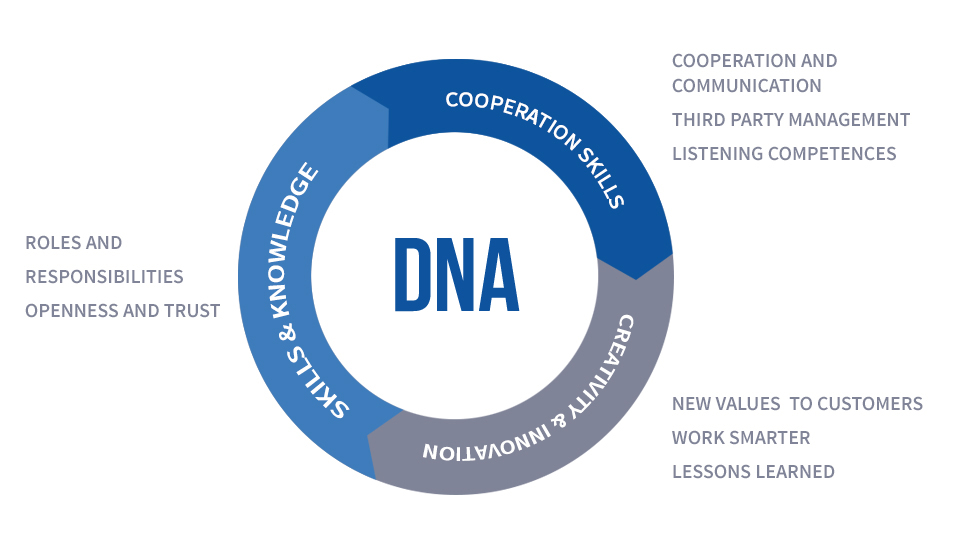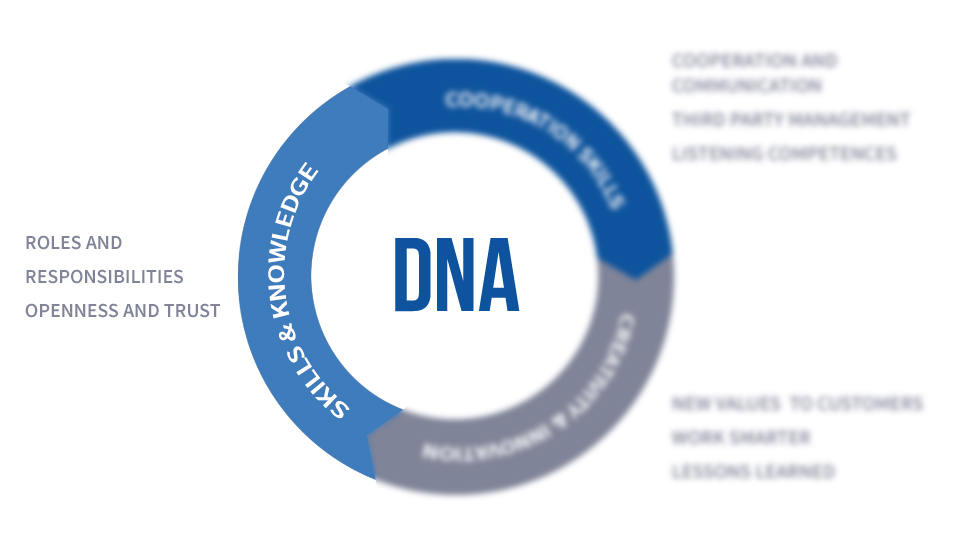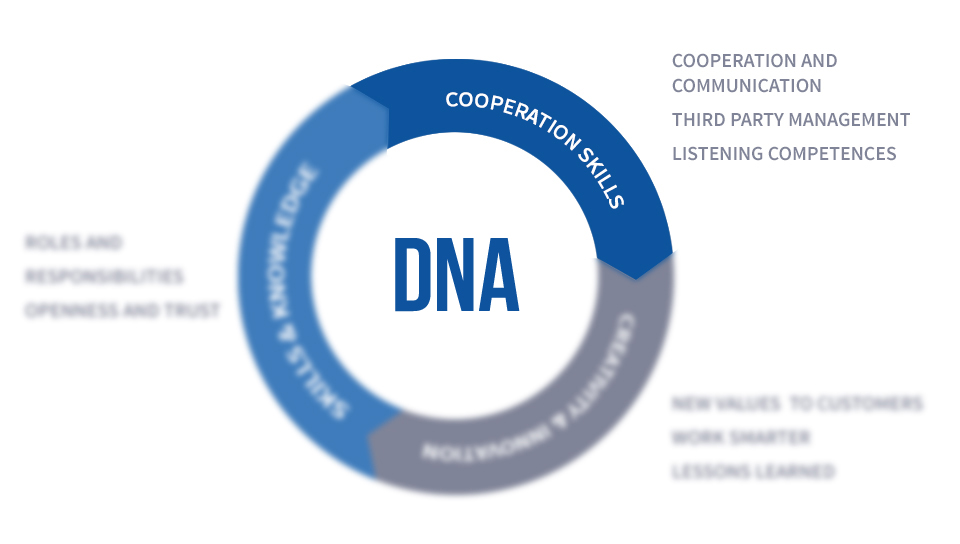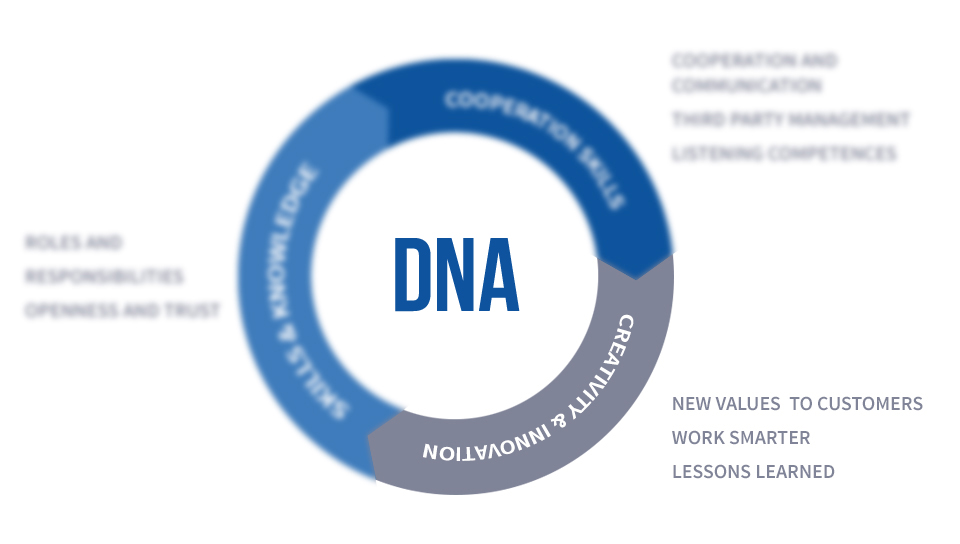

When looking at an organization, I usually feel compelled to influence its culture. I decided to implement new habits and ways of work which, when repeated and developed, would enhance the competitive edge of the company. I always wish to co-create a DNA that makes an organization unique.
To kick off we made a Zoom-In on the SKILLS and KNOWLEDGE area.

We started with individual contributors and by clarifying each and every post in the company. The beginning was to define the post, its roles and responsibilities, to eliminate grey areas as well as to understand what we were there for and learn. It defined what should be done, what one was to expect from others and vice versa. This process becomes easier when we have an open atmosphere when asking questions. It was even easier when there was agreement for it to be OK not to know. On the other hand, it was not OK to not have any doubts and avoid searching for answers. It was a process that required many discussions, some of which were often difficult due to the unexpected, i.e. double job, inefficiencies etc.
To support the above, we used a simple tool called the roles and responsibilities ( R&R ) matrix supported by the SLII concept. The R&R model is a simple tool that answers questions as to who is doing what in a specific area of the company’s activity. It shows the correlations between work and responsibilities and “cleans” the unknown. I call it a sanitary check for the work to be done.
Situational Leadership II ® (SLII) – is a theory developed by Paul Hersey and Ken Blanchard that says there is no single ‘‘best” style of leadership. Effective leadership is task-relevant and the most successful leaders are those who adapt their leadership style to the maturity (‘‘the capacity to set high but attainable goals, willingness and ability to take responsibility for the task and the relevant education and/or experience of an individual or a group for the task”) of the individual or group they are attempting to lead or influence. Effective leadership varies, not only with the person or group that is being influenced, but is also on the task, job or function that needs to be accomplished.
Myself, I found SL II to be a great tool for killing the tendency to feel shame for asking questions and the “I know better” approach. By implementing it, a company gives the right to its teams and individuals to openly ask for advice, look for help and share knowledge on different levels of the organization. Currently this concept ( SL II ) is used by numerous companies on the “Fortune 500” list.
By doing these two exercises in a coordinated way, we challenged the organization to acquire clarity, openness and trust. It fostered new habits for the organization. The trick is about keeping this alive. Anyway, this was the starting point : skills and knowledge that you should have in your organization with an open attitude to the known and unknown.
As a follow up to induce better COOPERATION, both internally and externally, I proposed checking the teams and our cooperation with customers and partners.

My experience – again based on a very simple tool – is related with the teams’ effort to understand the ways in which they cooperate in the areas of intuition, thinking, perception and feelings. It builds self -awareness, creates better teams, as well as increasing the quality of communication.
This tool is called Extended DISC® which is an assessment tool providing you with information to maximize your employees performance. It helps eliminate expensive mistakes, wasting time and resources. By implementing DISC, the organization learns about different behavioral styles, acknowledging and accepting team diversity and reflects on communicating with different styles. All this happens in the same DISC framework.
Once you understand this model yourself, you can start thinking via the same narrative regarding others in your team and company. It becomes easier to ask questions, cooperate, listen and observe. If you add to this, the openness of SLII, it can be even more effective. This is great to implement internally inside the company. It’s another step toward the desired state of trust.
Here I would like to highlight the existence of the external world and customers. These factions consist of people, teams and their own beliefs, behaviour or values. Once you know yourself better, you can work more easily with your clients. By applying the proper openness, you can understand their needs and provide solutions that meet or exceed their expectations. I describe this activity as discovering your client’s DISC behaviour patterns as well as those of other people. It helps create a sustainable business relationship based on solid foundations and active listening.
Now, having made an effort for clarity, skills and knowledge, openness and cooperation – both internal and external, you can count on your teams to start acting with more awareness on a personal and team level. This is the time for improvements. The time for INNOVATION, REFLECTION and LESSONS LEARNED from the past.

Starting from an internal area, inside your company – with all the above, the job can be done faster, better and smarter. As a company and individuals, you know your client better as well. You can propose new improved solutions and introduce them before the competition does. You can propose new ways of doing business and create values that were not previously possible. One thing for sure is that you cannot stop improving. These improvements may come from reflections from the past and/or observing trends. By integrating them each time in a better way, you will win.
Once you have made this journey, you are ready to start over again even more aggressively. I would go as far to say that all these phases happen in parallel. The trick is to do it better each time, reflecting on the past and re-integrating the improvements into the company.